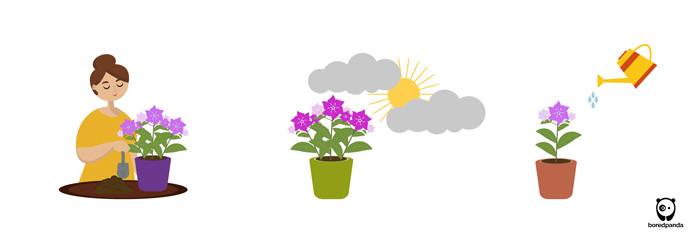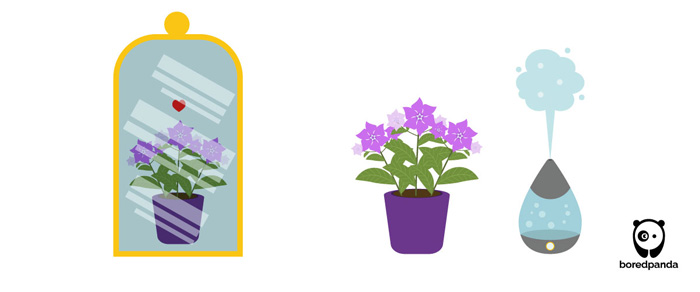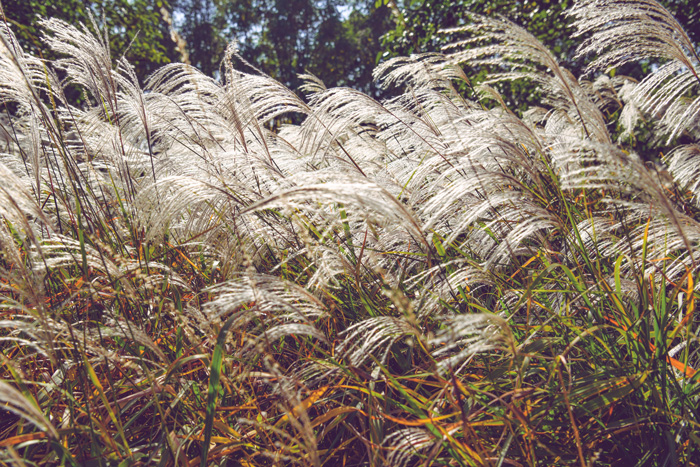If you are new to gardening or have limited time to care for your plants, periwinkle might be perfect for you. It’s a modest plant that thrives in different conditions and is relatively maintenance-free. And not just that—it looks gorgeous too!
The periwinkle flower comes in vibrant shades of blue, lavender, white, and soft pink. Its leaves, too, are beautiful—they are glossy, dark green, and oval-shaped. Together, the vibrant blossoms and lush foliage create a captivating symphony of colors and shapes.

Image source: Rajneesh Kumar thakur
Periwinkle is mostly cultivated as a ground cover. Its rapid growth helps cover bare soil and suppress the growth of weeds. However, with the right care and regular pruning, you can grow it as a garden edge or a container plant.
Whether you’re a gardening enthusiast looking to add a touch of elegance to your landscape or a beginner seeking an easy-to-care-for plant, this guide will walk you through every step. So, if you’re ready to transform your garden with the beauty of periwinkles, read on!
Plant Overview
Periwinkle Plant Types
Periwinkle plants are as varied as the colors that grace their petals. These are the five most common varieties:
Common Periwinkle (Vinca minor)

Image source: Sharan Pujar
Common Periwinkle grows as a lush carpet of glossy green leaves dotted with small, star-shaped flowers in shades ranging from sky blue to violet. Most gardeners prefer this variety as a low-ground cover to keep away weeds.
Its most popular cultivars include:
- Bowles’ Variety: (large blue flowers)
- Atropurpurea (deep purple flowers)
- Alba (pure white flowers)
- Ralph Shugert (variegated petals with creamy white edges)
- Gertrude Jekyll (creamy white flowers)
Greater Periwinkle (Vinca major)

Image source: frecreo
The Greater Periwinkle has bigger leaves and produces violet-blue flowers. This trailing evergreen is native to southern Europe but is widely cultivated in many parts of the world. And although it thrives in different environments (woodlands, meadows, or gardens), it’s considered less hardy in cold climates, where it’s grown as an annual plant.
Madagascar Periwinkle (Catharanthus roseus)

Image source: rminedaisy
Madagascar Periwinkle, which can grow up to 3.2 ft (1 m) tall, is widely cultivated in tropical and subtropical regions around the world. It’s grown as an ornamental plant in gardens, parks, and landscapes because of its attractive pink flowers.
Moreover, parts of it are used in several medicines to treat diabetes, cough, and sore throat. However, ingesting it is considered unsafe due to the presence of vinca alkaloids.
Note: Madagascar periwinkle is regarded as toxic to dogs, cats, and horses.
Intermediate Periwinkle (Vinca difformis)

Image source: botanikeando
Intermediate Periwinkles bloom in winter and early spring and can grow up to 1.6 ft (0.5 m). This is a hybrid variety that produces pale blue or white flowers. It is used as a medicinal herb in some cultures.
Herbaceous Periwinkle (Vinca herbacea)
Image source: sir_thomas2013
Vinca herbacea is a wildflower usually found in woodlands. It is not as commonly cultivated as other periwinkle varieties. However, it can be grown as a ground cover on slopes or rocky garden beds. This variety has distinct pale blue or violet flowers that look like pinwheels.
RELATED: How To Grow And Care For Texas Bluebonnet Flower
Where and When to Plant Periwinkle
Vinca minor is a hardy plant. It adapts well to different growing conditions, meaning it can be planted in a range of garden settings. It thrives in shaded to partially shaded areas, such as under trees, where other plants might struggle due to competition for sunlight and nutrients. It also grows well along garden borders, creating an attractive edge.
Image source: burke_2012
Moreover, periwinkle can help control soil erosion. It has the ability to root and spread rapidly, which helps hold the soil in place. Hence, if soil erosion is an issue, plant it along slopes and hillsides.
Note: However, there’s the other side of the coin: its aggressive growth habit makes periwinkle an invasive plant. Therefore, If you’re planting it directly in the ground, leave ample space for other plants and prune it regularly to control its growth.
Image source: kellbellam
Now, let’s address the timing. Periwinkles bloom in spring and summerand sometimes again in the fall. Hence, they should be planted in early spring, around March or April. They can even be planted in fall, but you have to ensure they have enough time to root before the first frost.
How to Plant Periwinkle Outside
Lastly, the fun part—planting! Follow this easy step-by-step guide to plant your periwinkle plant outside:
Step 1. Loosen the soil using a garden fork or tiller. This helps create a hospitable environment for the roots to spread.
Step 2. Mix in organic matter like compost to improve soil fertility and drainage.
Step 3. Dig a hole for each seedling that is about the same depth as the root ball and twice as wide.
Step 4. Space these plants 12–18 inches apart to allow for spreading.
Step 5. Water the new plant thoroughly and add mulch around the base to retain moisture.
Periwinkle Care Tips
Periwinkles are forgiving plants that can tolerate hardy conditions. But with a little TLC, they will reward you with colorful blooms that flower in spring and summer. Follow these care tips to ensure your periwinkles thrive.
Soil, Water, and Light Requirements
These plants prefer slightly acidic soil but can tolerate different soil conditions. Ensure your soil has good drainage to avoid waterlogging. Add in compost to improve its fertility.
When it comes to watering periwinkle, the mantra is moderation. Like most plants, it appreciates consistent moisture but won’t tolerate waterlogging. Water new seedlings twice a week but reduce watering as the plant matures. Water only when the top of the soil feels dry.
Periwinkle thrives in partial to full shade. However, it can also tolerate some sunlight, especially in cooler climates. Aim for a spot with dappled sunlight, preferably under a tree canopy.
Temperature and Humidity
Periwinkle grows in USDA Hardiness Zones 4 to 9, making it suitable for a wide range of climates. While afternoon shade can provide relief in hotter regions, the plant thrives in moderate temperatures. However, periwinkle won’t tolerate frost. If you are growing periwinkle flowers in a pot, consider moving them indoors in winter.
This tough little plant isn’t particularly demanding when it comes to humidity, although too much humidity and wet conditions can lead to fungal diseases (more on them below).
Fertilizing
Fertilizing periwinkles isn’t necessary. However, a small dose of balanced NPK fertilizer can give you brilliant green and dense foliage.
Pruning Periwinkles
Pruning periwinkles is essential to keep their rapid growth in check. Mow or shear the plant if it invades other small plants in your garden. Regularly trim the edges as part of your lawn care to prevent the plant from spreading too vigorously.
Give it a good trim in early spring to remove any winter damage or straggly growth. Deadhead the very first flowers in spring to encourage dense growth. To prepare for overwintering, trim the plant back to just a few inches in height. This will encourage regrowth in spring.
Growing in Pots

Image source: mai_largo
If your garden is small, you can grow periwinkles in flower pots to save space. First, choose a well-draining container with drainage holes. A pot that’s 12 to 18 inches in diameter works well for periwinkle. Make sure to use an organic soil mix and add perlite or coarse sand to enhance drainage.
While the periwinkle plant can live in even the worst of soils, a little help goes a long way. Then, gently remove the seedling from its container and place it in the center of the new pot, ensuring it sits at the same level it was in its original container. Water to help settle the soil. As the plant grows, you might need to repot it to a larger pot.
RELATED: Snake Plant Care Guide & Tips For A Thriving Plant
Propagating Periwinkle
Propagating periwinkle is a breeze and a great way to expand your green space. You can grow periwinkle with three methods: by rooting stem cuttings in water or soil; growing them from seeds; or dividing existing plants.
Here’s a detailed guide for each method:
Propagating in Water
To propagate periwinkle in water, choose healthy, non-flowering stems from your existing periwinkle plants. Remove excess leaves from the lower part, and place the stem cutting in a jar filled with water. Change the water every few days to keep it fresh. This prevents the growth of harmful bacteria and ensures that your periwinkle cuttings have the best conditions for rooting.
After a few weeks, you’ll start to see tiny roots emerging from the nodes of the cuttings. Once the roots are a couple of inches long, your periwinkle cuttings are ready to be planted. Create a hole in the soil using your finger and plant the cutting. Gently press the soil to help the new plant settle in its new home.
Propagating in Soil
Periwinkles can also be rooted directly in the soil. Follow the same method as above by selecting now-flowering stems and removing excess leaves from the bottom. Dig a hole in the soil deep enough to hold the cuttings firmly in place.
Then, dip the cuttings in a rooting hormone and place them in the soil, spacing each of them 6–12 inches apart. Water them thoroughly to settle the soil and encourage root establishment.
Pro Tip: The best time to propagate periwinkle is in spring or early summer when the plant is actively growing.
Seed Propagation
Periwinkle can be grown from seed, but it takes time and patience. Start the seeds indoors in a seed tray 6–8 weeks before spring. Periwinkle seeds germinate in darkness, so make sure to press them deep into the soil.
Seedlings will start emerging in 10–14 days. Wait another 2–3 weeks till the plants develop strong roots. After that, you can transplant them directly into the soil in springtime.
Division Method
This is the quickest way to propagate the periwinkle plant. To divide, dig out a clump of the plant with roots intact. Periwinkles have shallow roots, so dig carefully. Divide the plant so each section has enough roots to hold in the soil. Next, transplant into the desired location and water thoroughly to help the plant establish.
Uses for Periwinkle
This versatile and resilient plant has a range of uses that extend beyond its ornamental value.
- Periwinkle’s trailing habit makes it an excellent choice for erosion control. Plant it along slopes and banks to protect the soil.
- Periwinkle has a long history of traditional herbal use in different cultures. The plant contains alkaloids, which are believed to have medicinal properties. (Note: Self-medication can be dangerous. Please consult a doctor before consuming this plant as a medicine.)
- Alkaloids derived from periwinkle are used in cancer treatment.
- The periwinkle flower is rich in nectar and is a magnet for pollinators, especially butterflies and bees.
- Its vibrant flowers are ideal for creating neat and defined garden edges. Plant it along pathways or picket fences to add a touch of color to your landscaping.
- Periwinkle blue is the ribbon color for stomach cancer awareness.
Image source: Ashuvynni Silver Raju
If you were wondering about the periwinkle meaning, the flower symbolizes friendship, everlasting love, and serenity. Even the periwinkle color is celebrated in the fashion world. In 2022, Very-Peri was chosen as the color of the year by Pantone for its “spritely, joyous attitude, and dynamic presence that encourages creativity and imaginative expressions.”
RELATED: Cool Colors: A Decorating Guide For Top-Notch Interiors
Common Diseases, Pests, and Problems

Image source: theonlypinkmoons
Periwinkles, specifically the Vinca minor variety, are generally resilient and low-maintenance. However, they are not entirely immune to diseases and pests. They might be susceptible to leaf spots and wilting caused by fungal diseases. Watering at the base, rather than on the foliage, can help avoid excess moisture, which breeds fungal diseases.
The plant can be affected by common pests, such as spider mites and whiteflies. Use an insecticidal spray or neem oil to keep these insects at bay. Herbivores such as deer and rabbits tend to avoid eating periwinkle.
Companion Plants
Ajuga (Ajuga reptans)
Image source: geregeldilse
RELATED: Ultimate Guide to Growing and Caring For Ajuga Plant
Astilbe (Astilbe spp.)
Image source: the_neverending_garden
RELATED: How to Grow & Care for Astilbe Plants: Everything from A to Z
Ornamental Grasses
Image source: Suki Lee
RELATED: 15 Beautiful Ornamental Grasses to Spruce up Your Yard
Lungwort (Pulmonaria spp.)
Image source: Viktoria Stetsko
Hosta (Hosta spp.)

Image source: Yoksel Zok
So, there you have it—an easy guide to growing and caring for periwinkles. This low-maintenance plant will make a beautiful addition to your home garden. With a little bit of care, your periwinkle paradise is sure to flourish. So, roll up your sleeves and embrace the simple joys of gardening with periwinkle.
FAQs
Does Periwinkle Come Back Every Year?
Yes, periwinkle is a perennial plant, meaning it comes back year after year. In colder climates, periwinkle will experience winter dieback. However, it usually regenerates from the roots in the spring. In milder climates, it can thrive throughout the year.
Will Periwinkle Choke Out Weeds?
Yes, it can be effective in suppressing weeds to some extent. It spreads as a dense ground carpet, which shades the soil and prevents sunlight from reaching weed seeds, thereby inhibiting their germination. Also, its vigorous growth outcompetes weeds for space and nutrients.
However, periwinkle is considered invasive for this very reason. You must prune it frequently to check its growth in unwanted areas.
READ NEXT
Air Plants Require No Soil: Full Care and Design Guide
Zinnia Flowers: Planting, Growing, and Caring Tips
21 Low-Light Indoor Plants That Give Beautiful Results With Low Effort

 Dark Mode
Dark Mode 

 No fees, cancel anytime
No fees, cancel anytime 







































































15
1